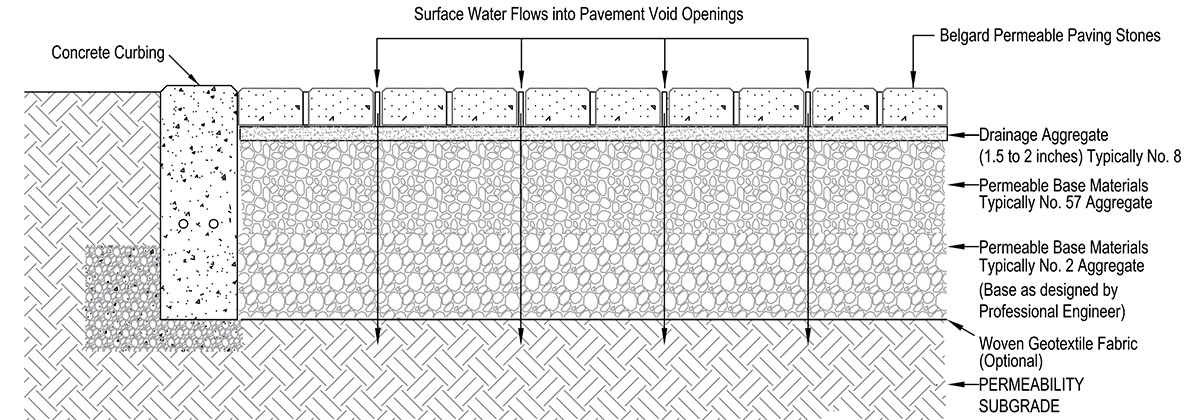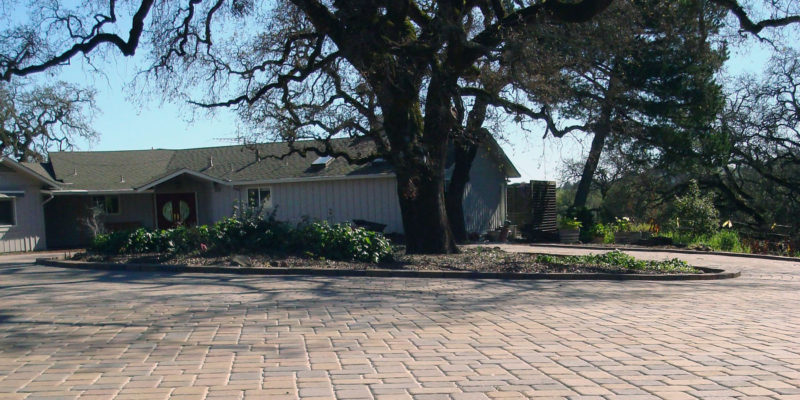During heavy rainstorms and continued rains over several days, storm water run-off creates all sorts of problems and becomes a major concern to homeowners and businesses. To help alleviate these problems, cities all over Marin and Sonoma counties are recommending, and in some cases requiring, the installation of permeable pavers.
Unlike impervious surfaces such as concrete and asphalt, permeable pavers allow water to seep into the ground, which helps prevent flooding, and as an added bonus, are a far better solution for the environment.
How It Works
With impervious materials, water runs over the surface and into storm drains or collects in large puddles, causing standing water, flooding and a host of other problems. Because permeable pavers have larger spacers than standard pavers, the joint between each paver is wider, so, instead of running over the surface, or collecting in low spots, water filters down between the pavers through a fill of small stones. The permeable base beneath the pavers allows water from the surface to percolate down into the ground or drainage system.
Before beginning a permeable paver project, it should be determined what will be done with the water. In many cases it is most beneficial to let the water settle back into the ground below. In other cases, it may be best to set up a drainage system in the base to capture and salvage the water. A qualified installer can help determine the best process for your project.

Environmental Bonus
The EPA, municipalities and a host of other agencies all over the world have been studying the effects of storm water run-off on the environment and society. Due to the rapid and continuing development of land, with massive amounts of impervious concrete and asphalt replacing natural surfaces, they have found that it has become virtually impossible for groundwater to be naturally replenished. Valuable storm water which used to penetrate the soil is being lost or diverted. Storm drains are depositing the polluted and clogged run-off into waterways and wetlands, and this is threatening rivers and ecosystems everywhere. Researchers recognize that the installation of permeable pavers instead of an impervious surface, allows the groundwater to be recharged. Further, in the process of percolating through the base, solids are trapped and pollutants are filtered from the storm water, and a natural process is restored. Due to these factors, and as an incentive to homeowners and builders, the installation of permeable pavers can qualify a project for valuable LEED® credits.
Design
Not too long ago, the choices of permeable pavers were limited, often restricted to bland grey rectangles. Now, because of all the benefits of permeable pavers, and because some cities are requiring permeable surfaces, paver manufacturers are meeting the demand with a host of attractive options. BELGARD has a whole line of environmental pavers, and some of their standard pavers qualify as permeable pavers in residential and pedestrian applications, and many other manufacturers have developed permeable versions of their standard pavers.



